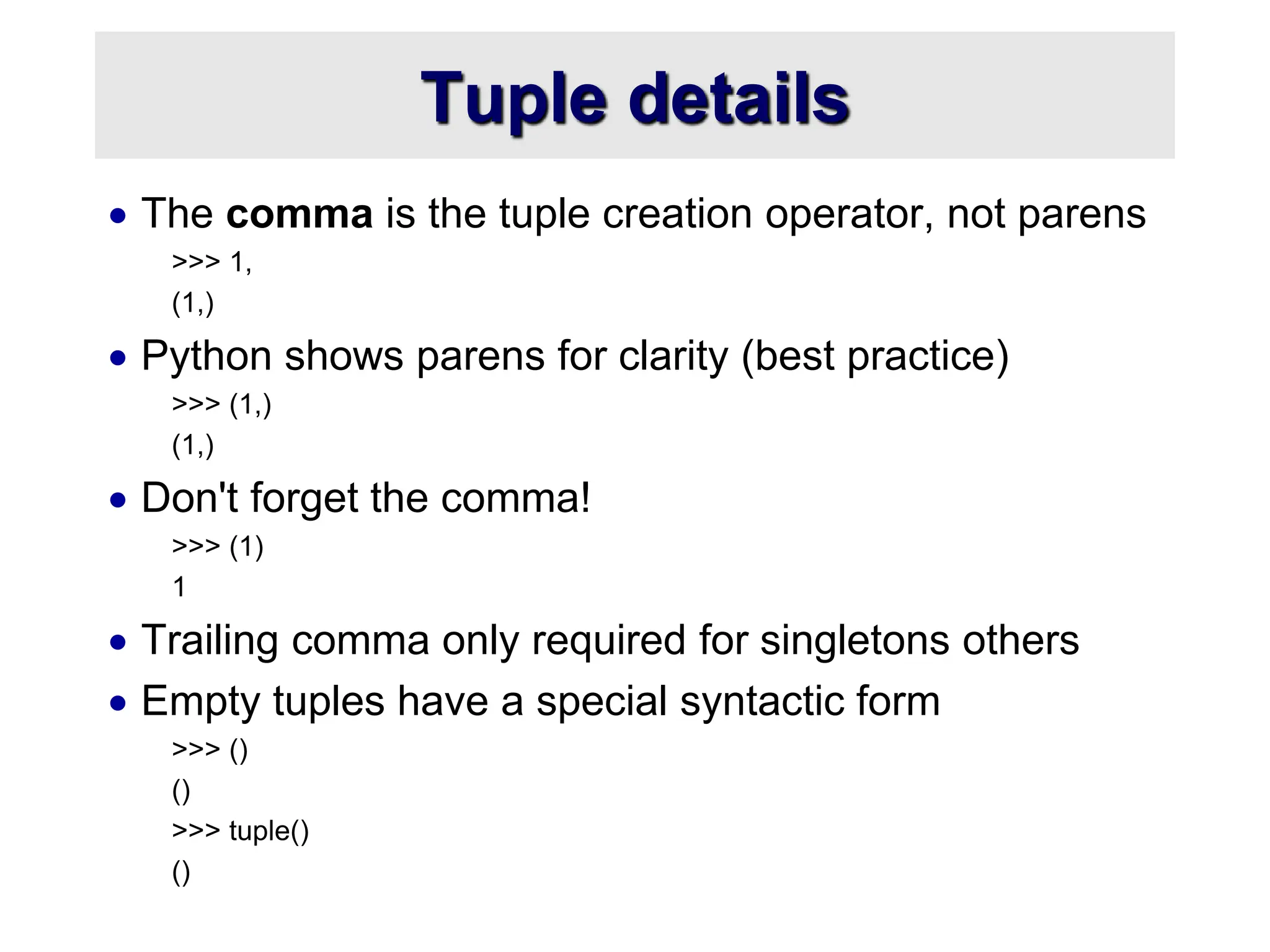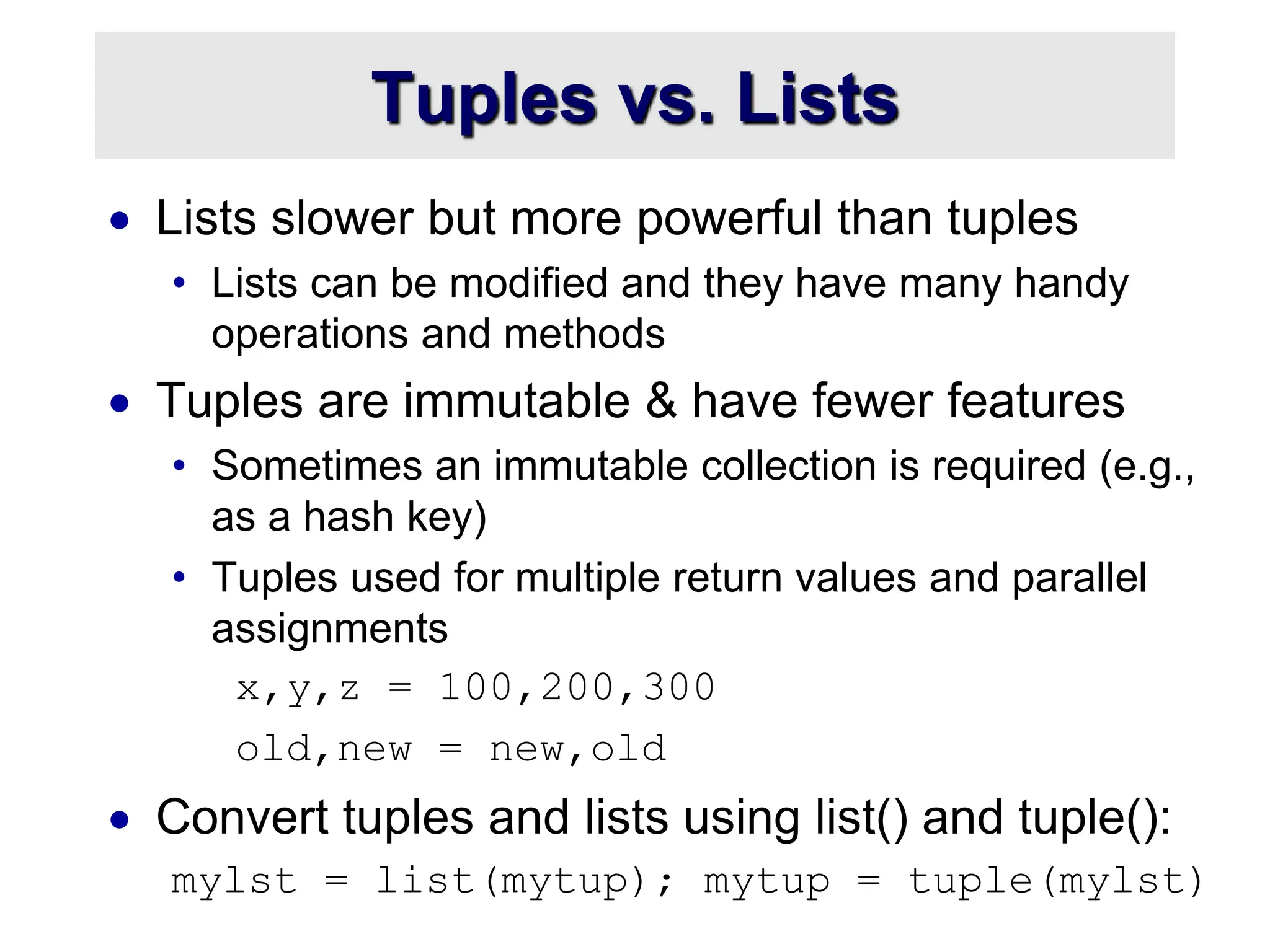The document provides an overview of Python programming concepts, focusing on data types, assignment, naming conventions, and mutability of sequences such as lists, tuples, and strings. It explains the significance of indentation, the use of comments, and the differences between mutable and immutable types, while also detailing Python's built-in type hierarchy and common operations. Additionally, it discusses naming rules and conventions within the Python community, along with the importance of the Python Enhancement Proposal (PEP) process.
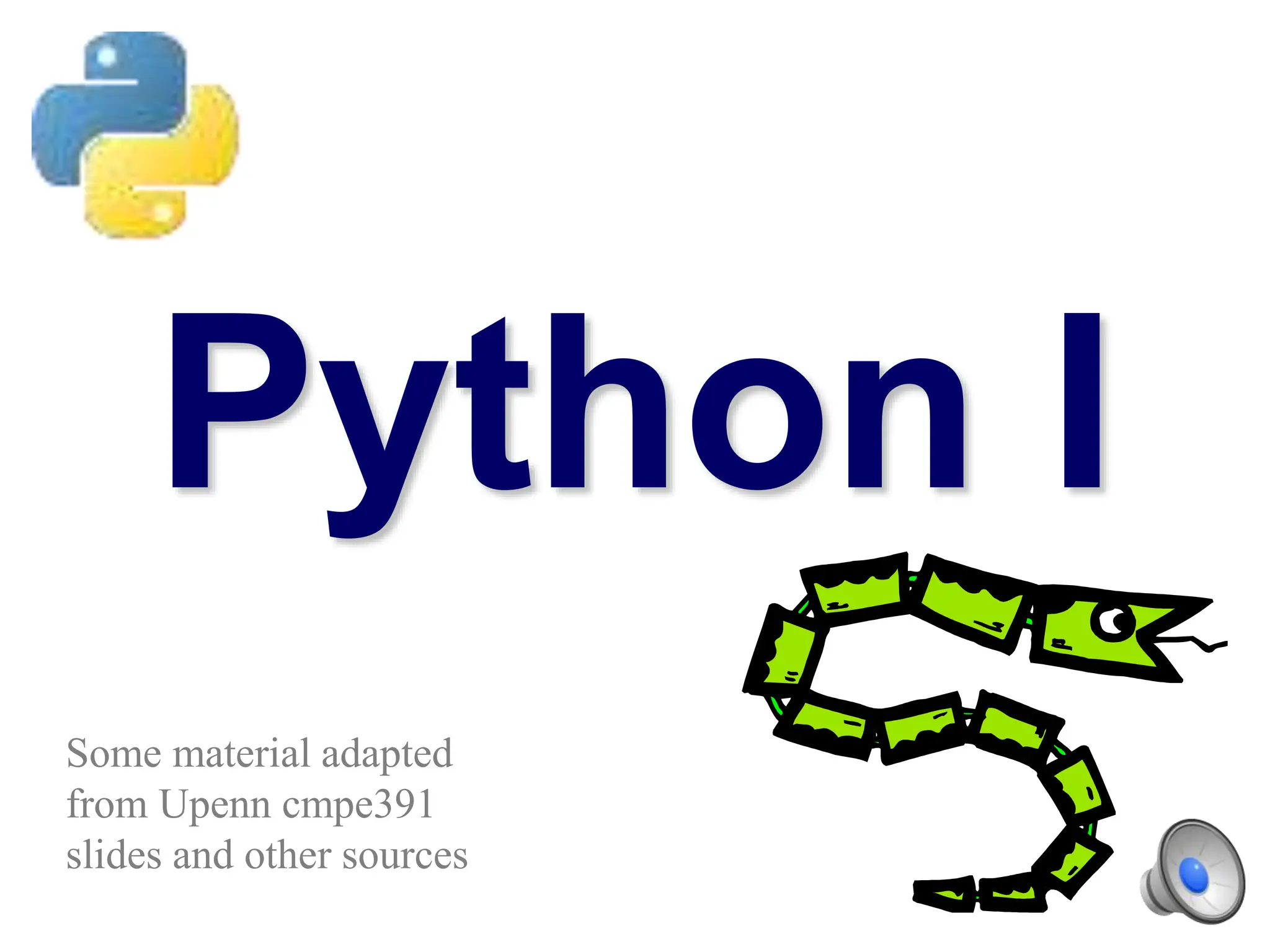
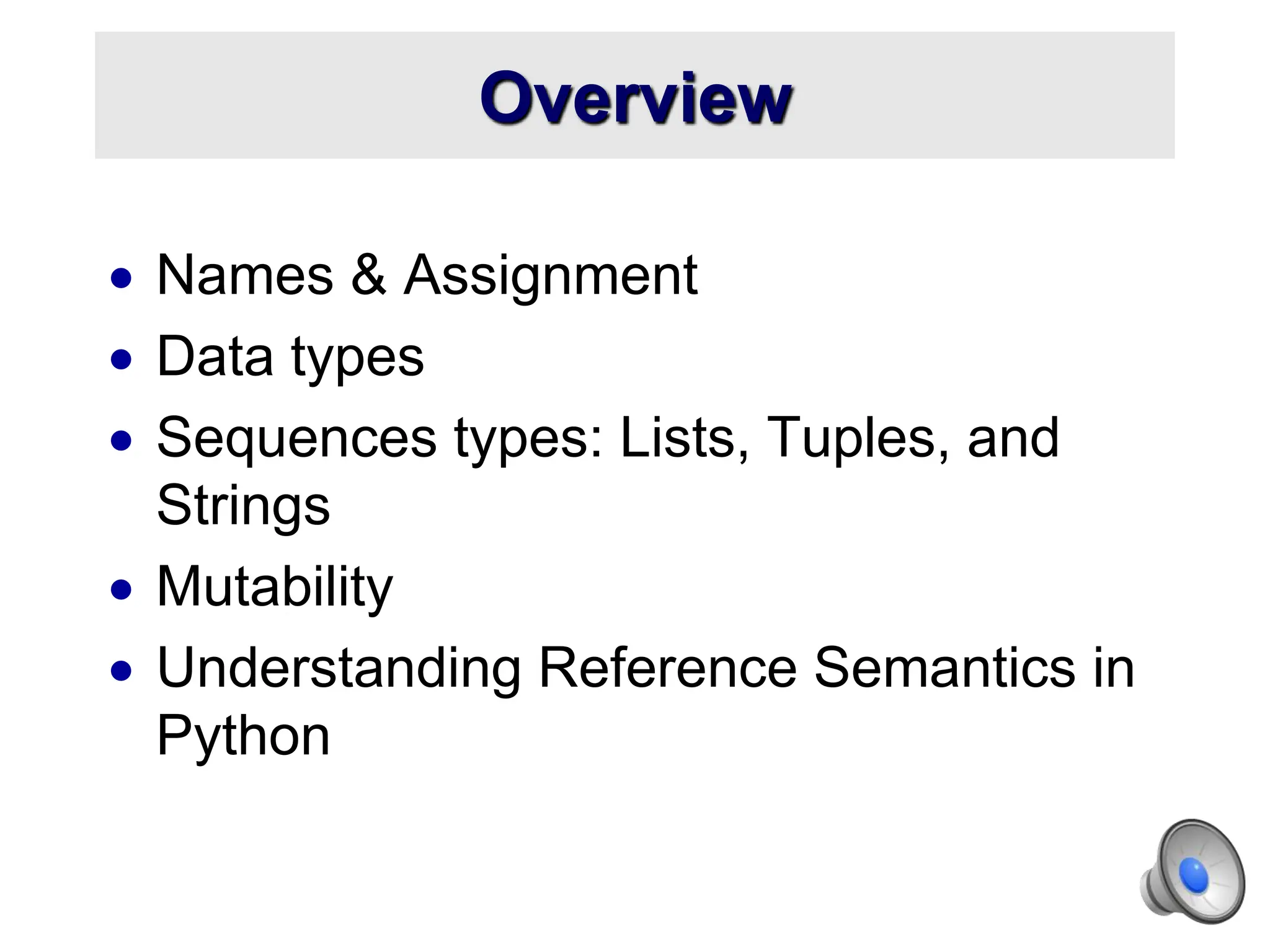
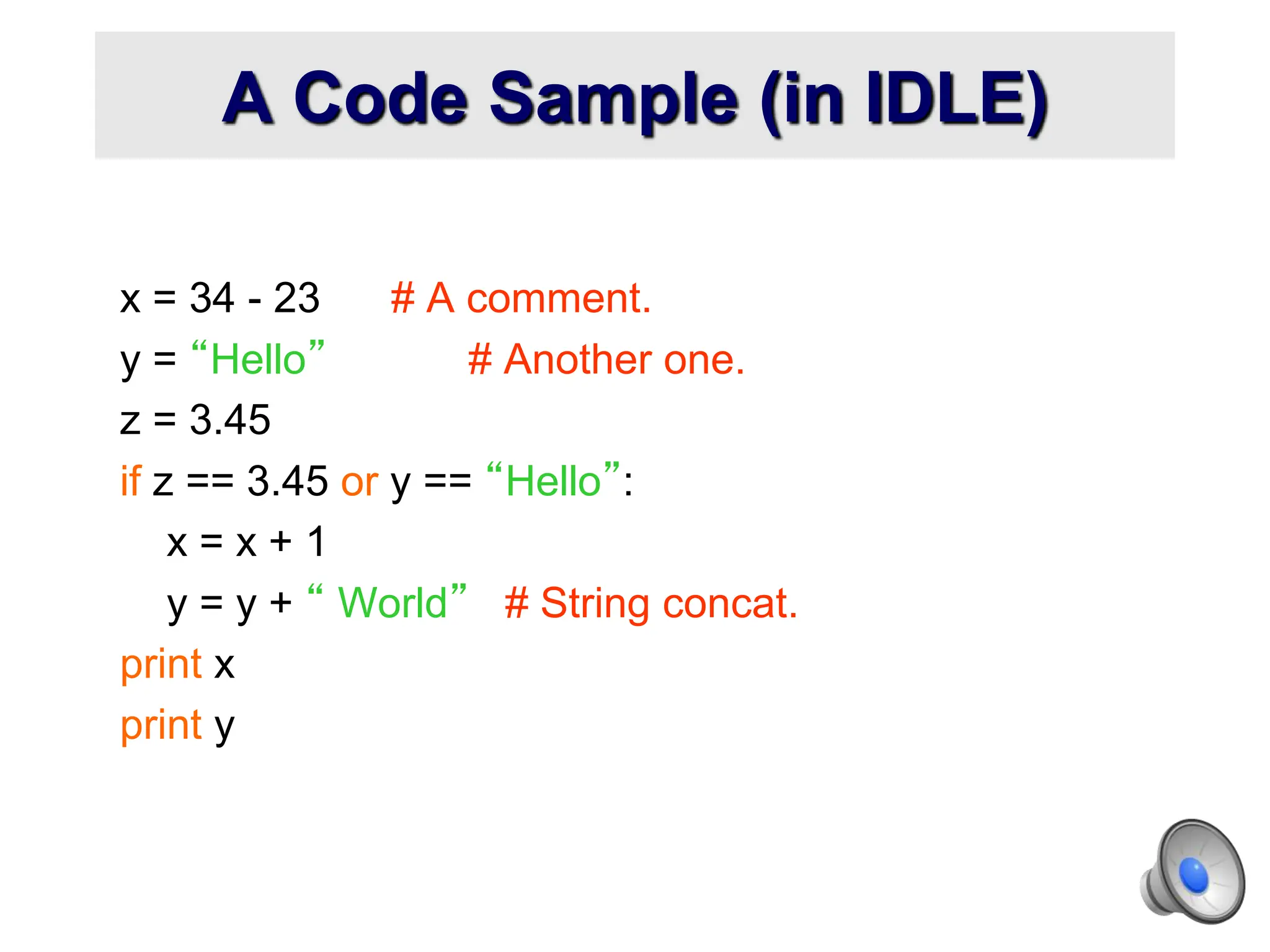
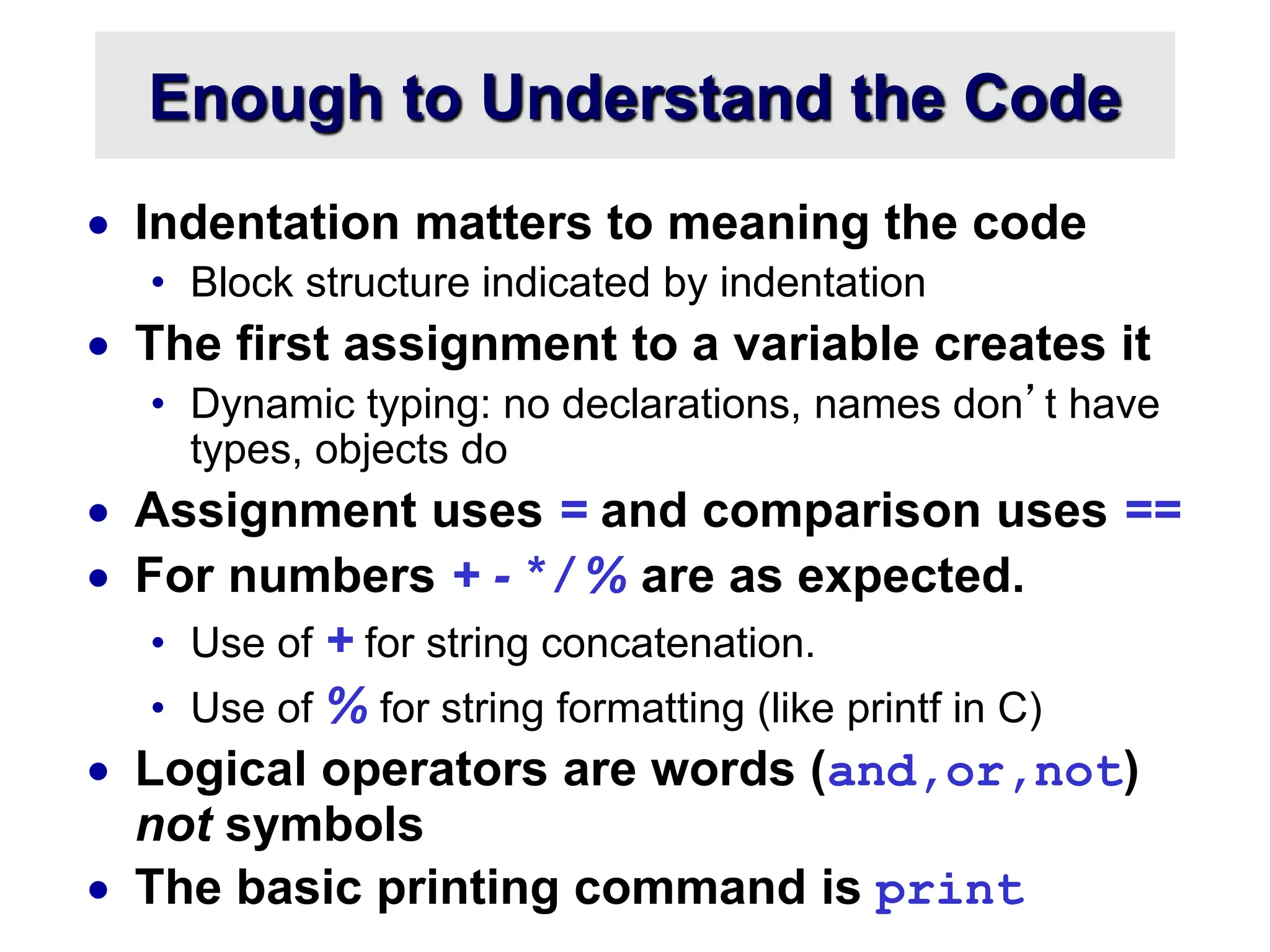
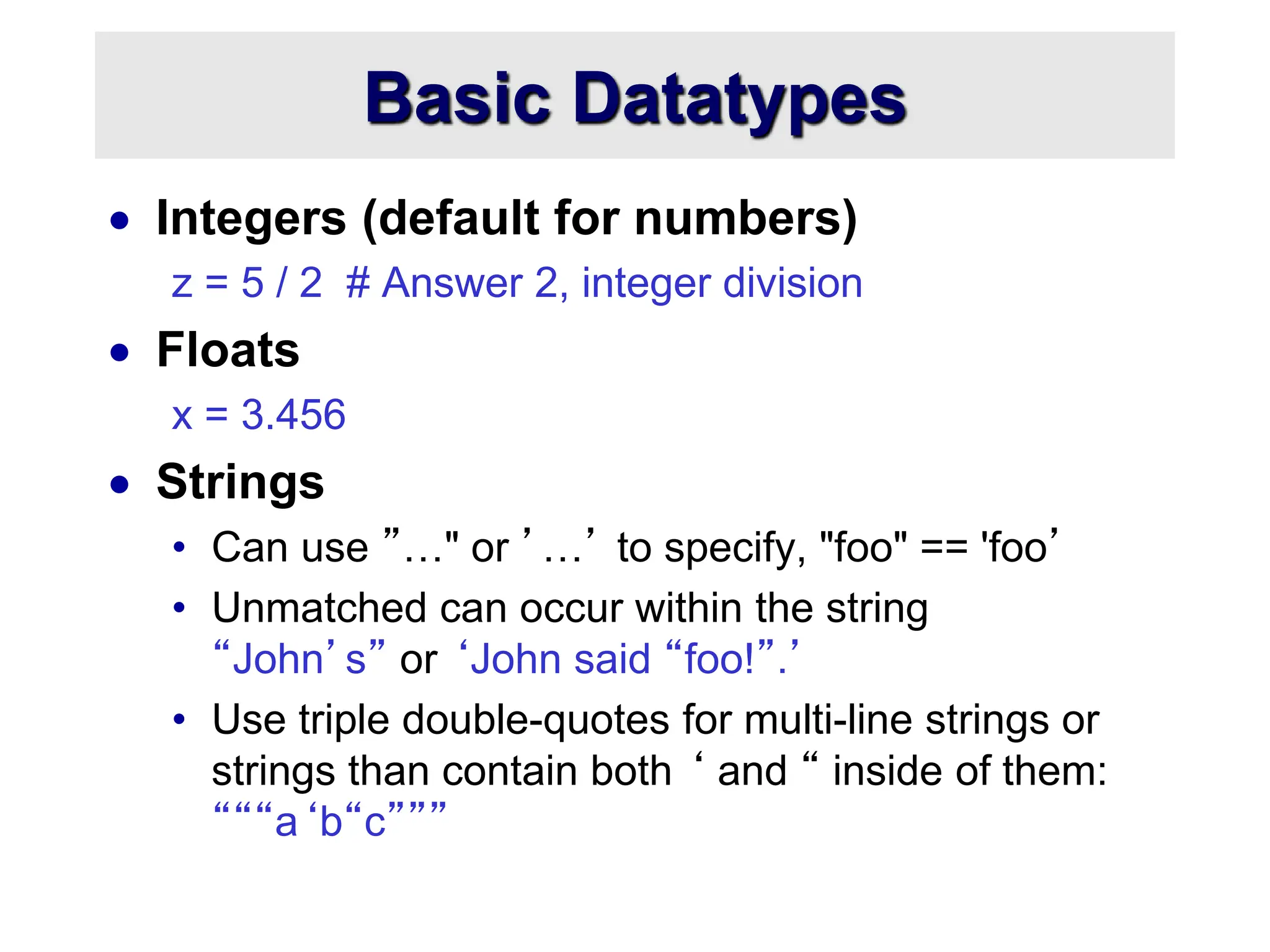
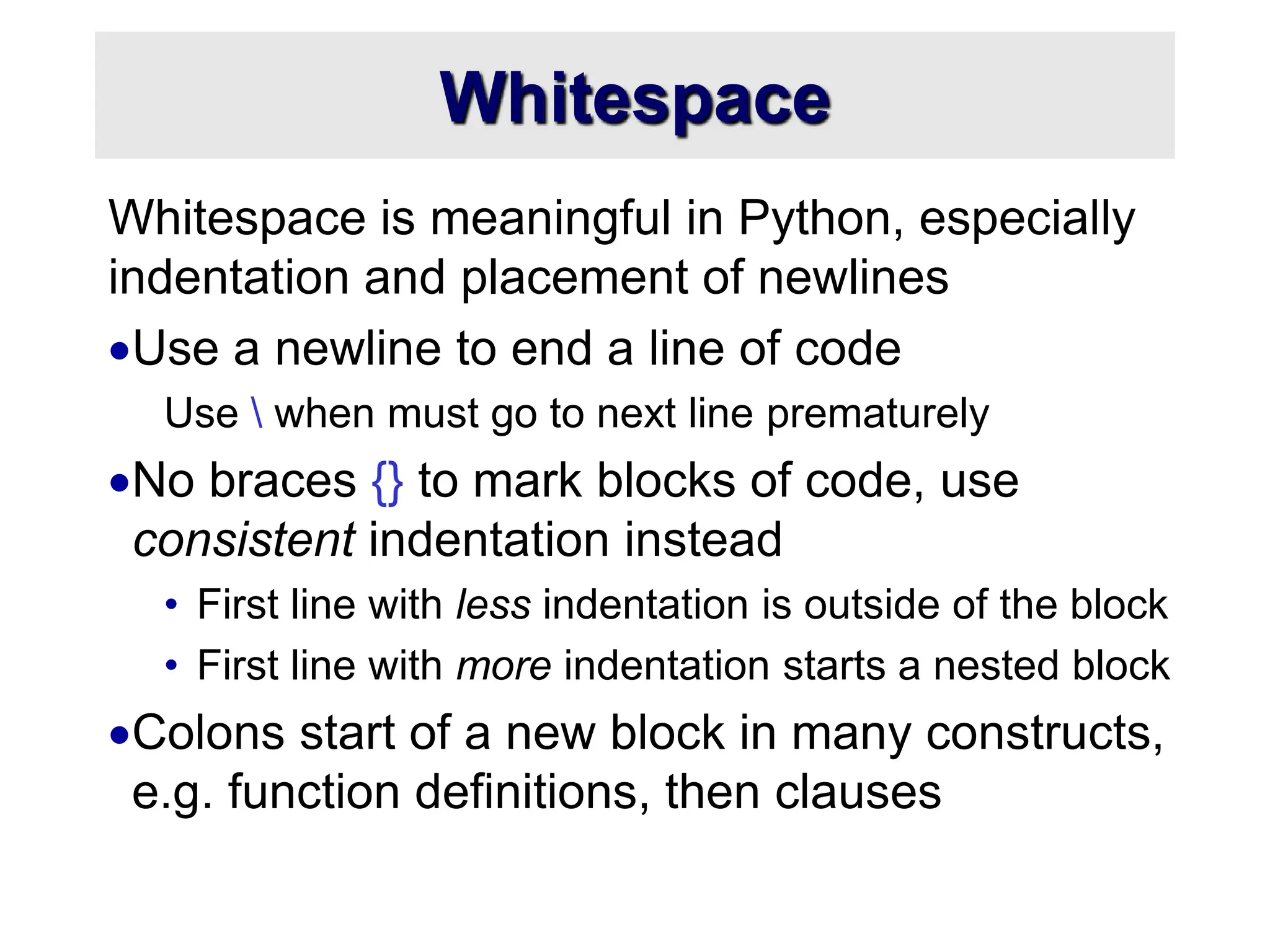
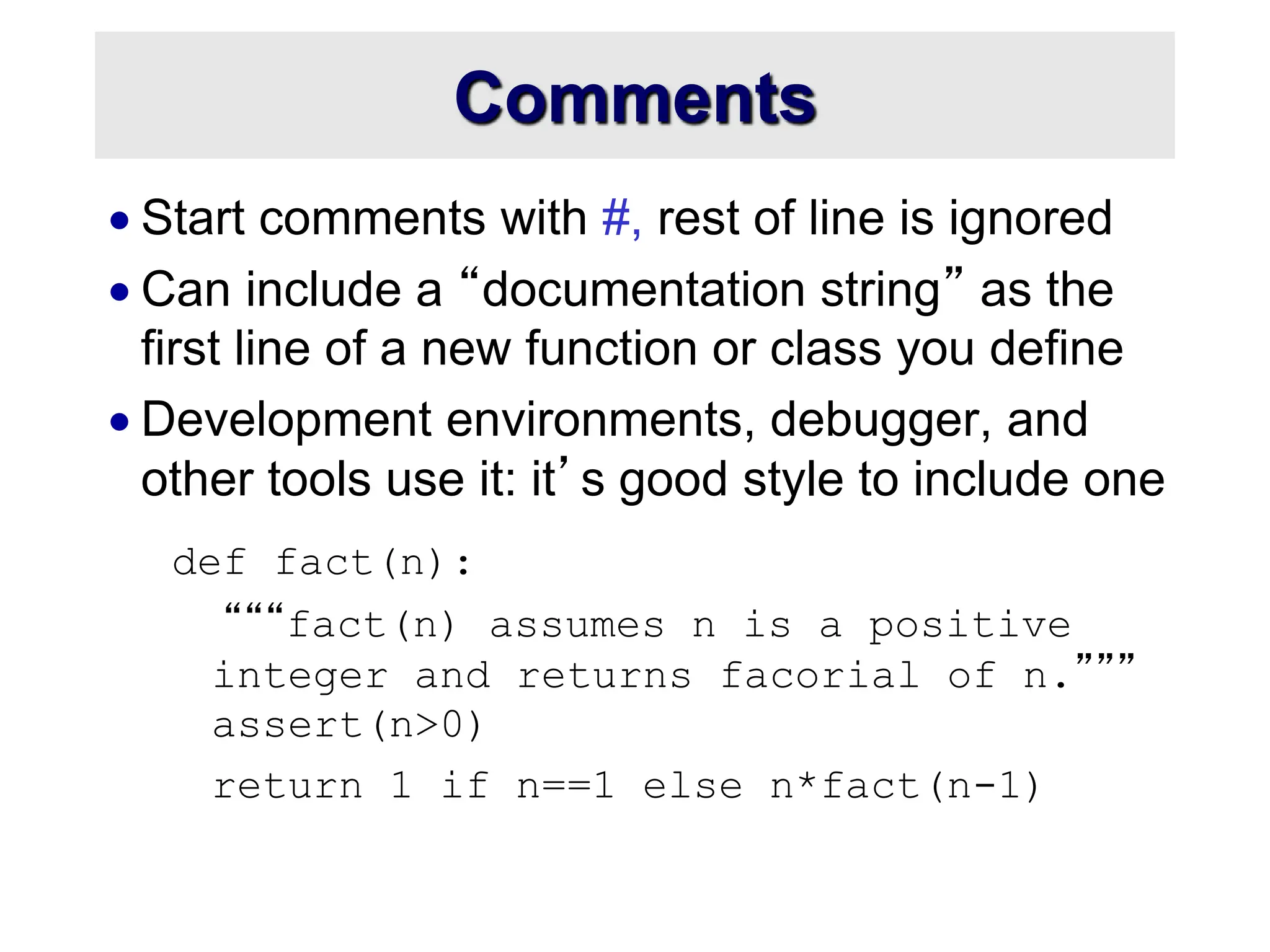

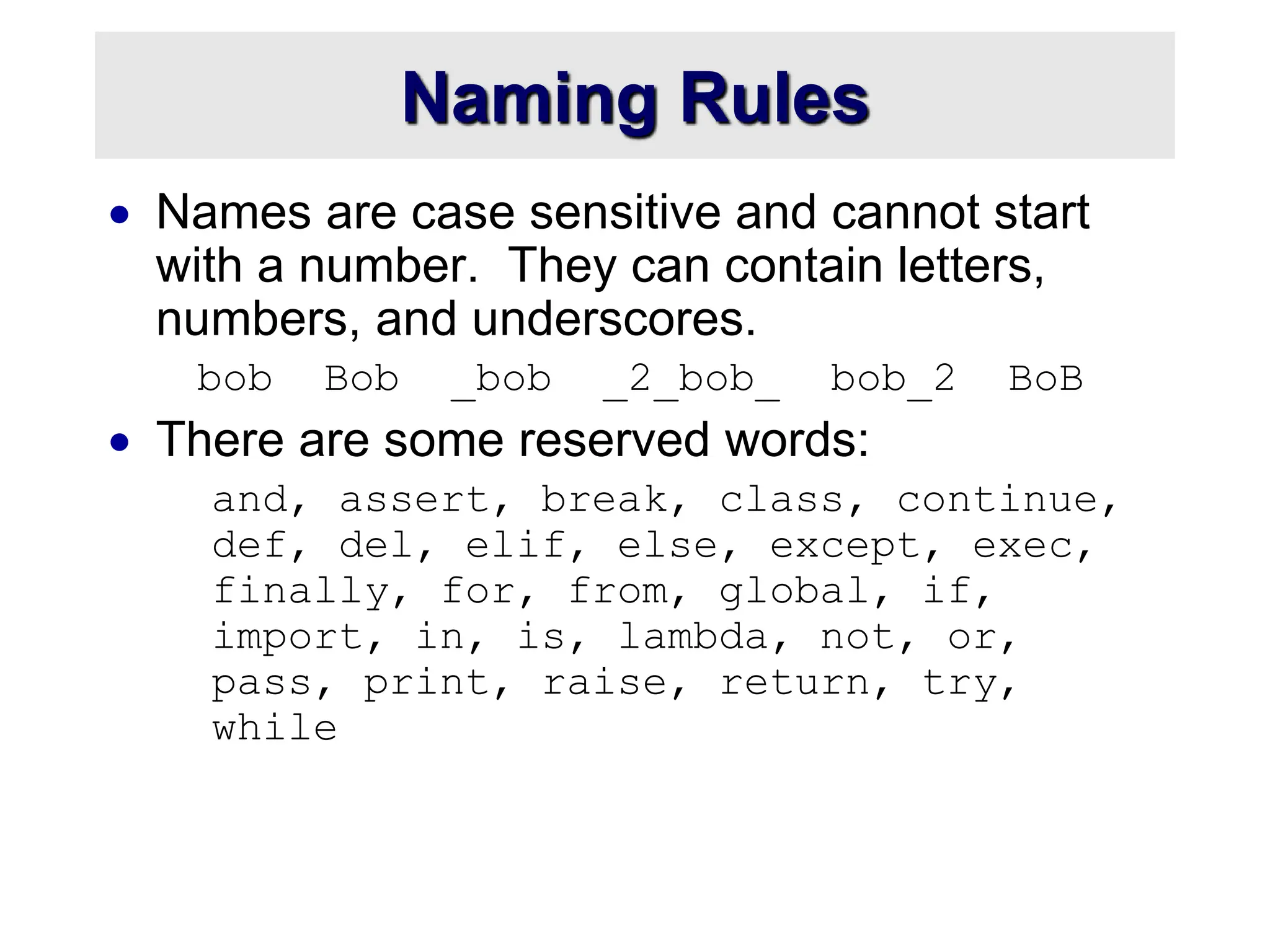
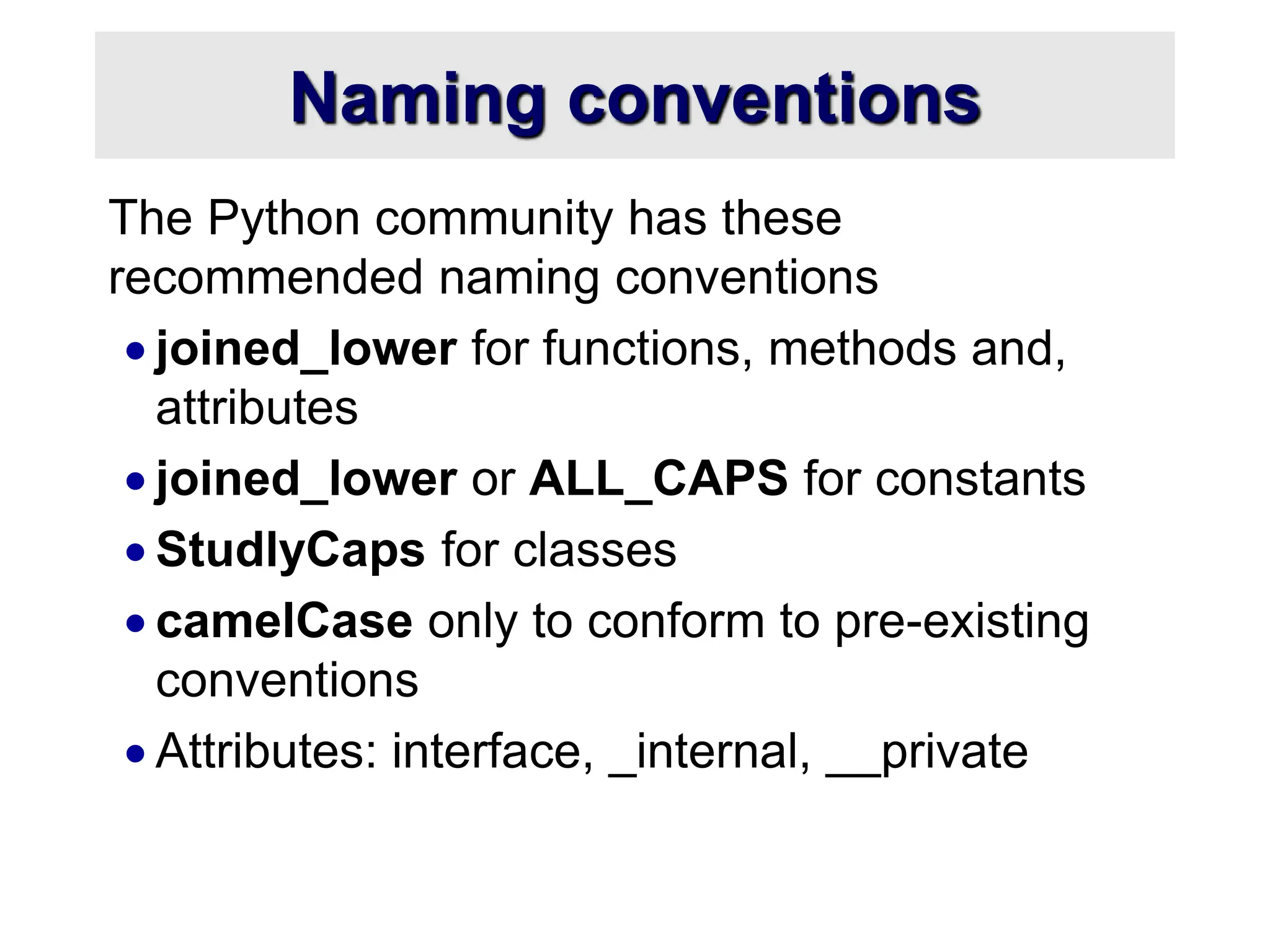
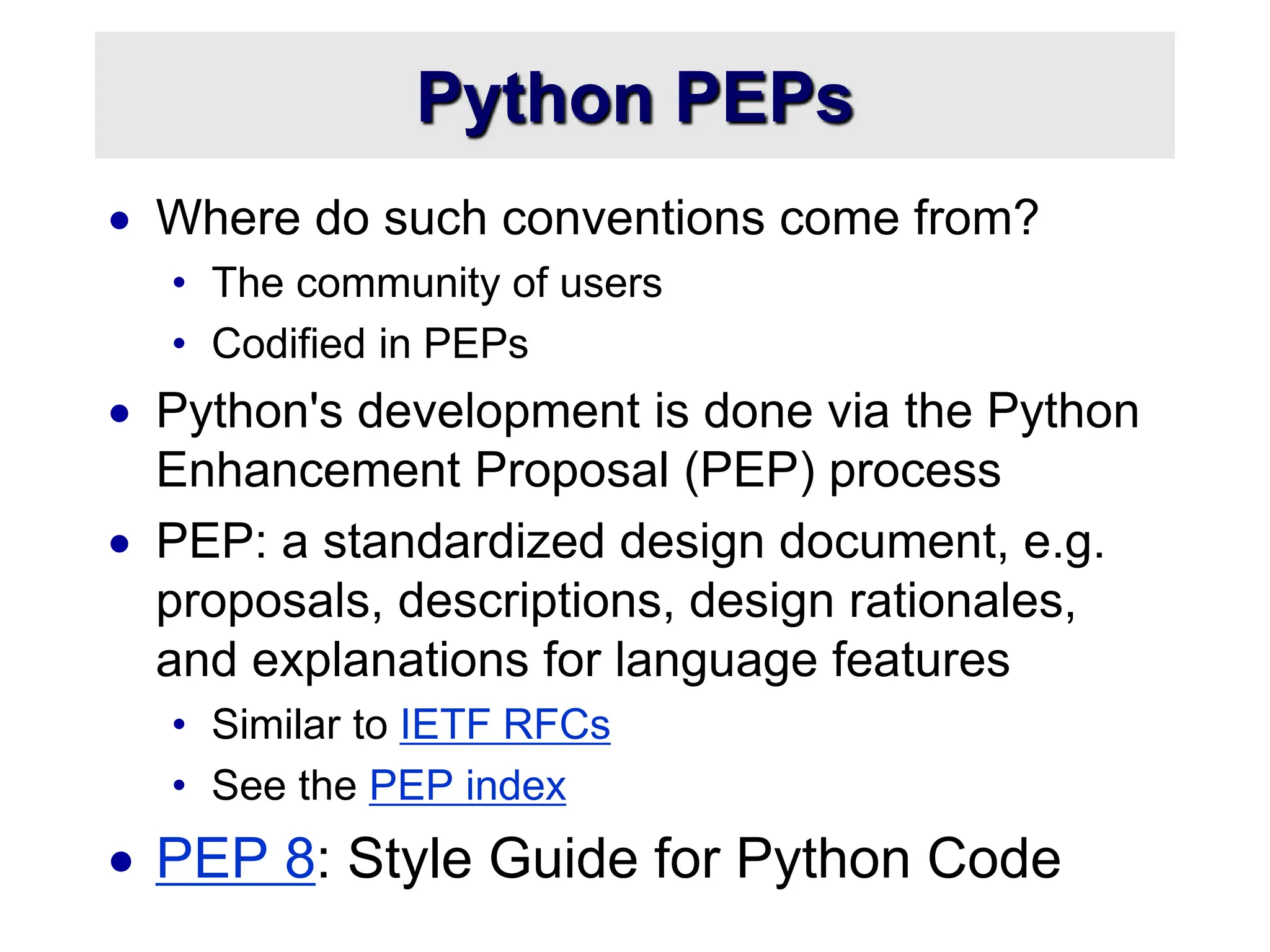
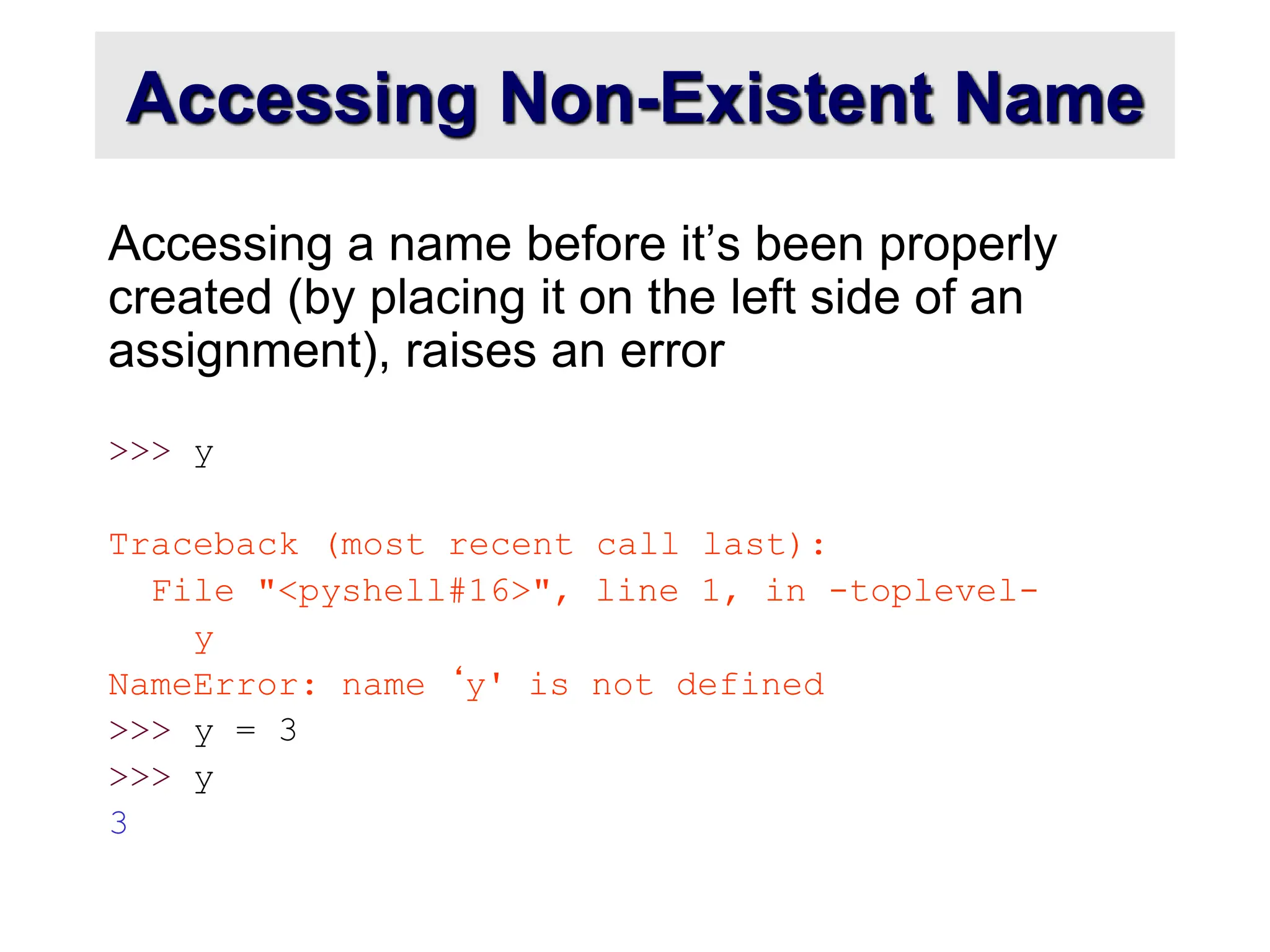
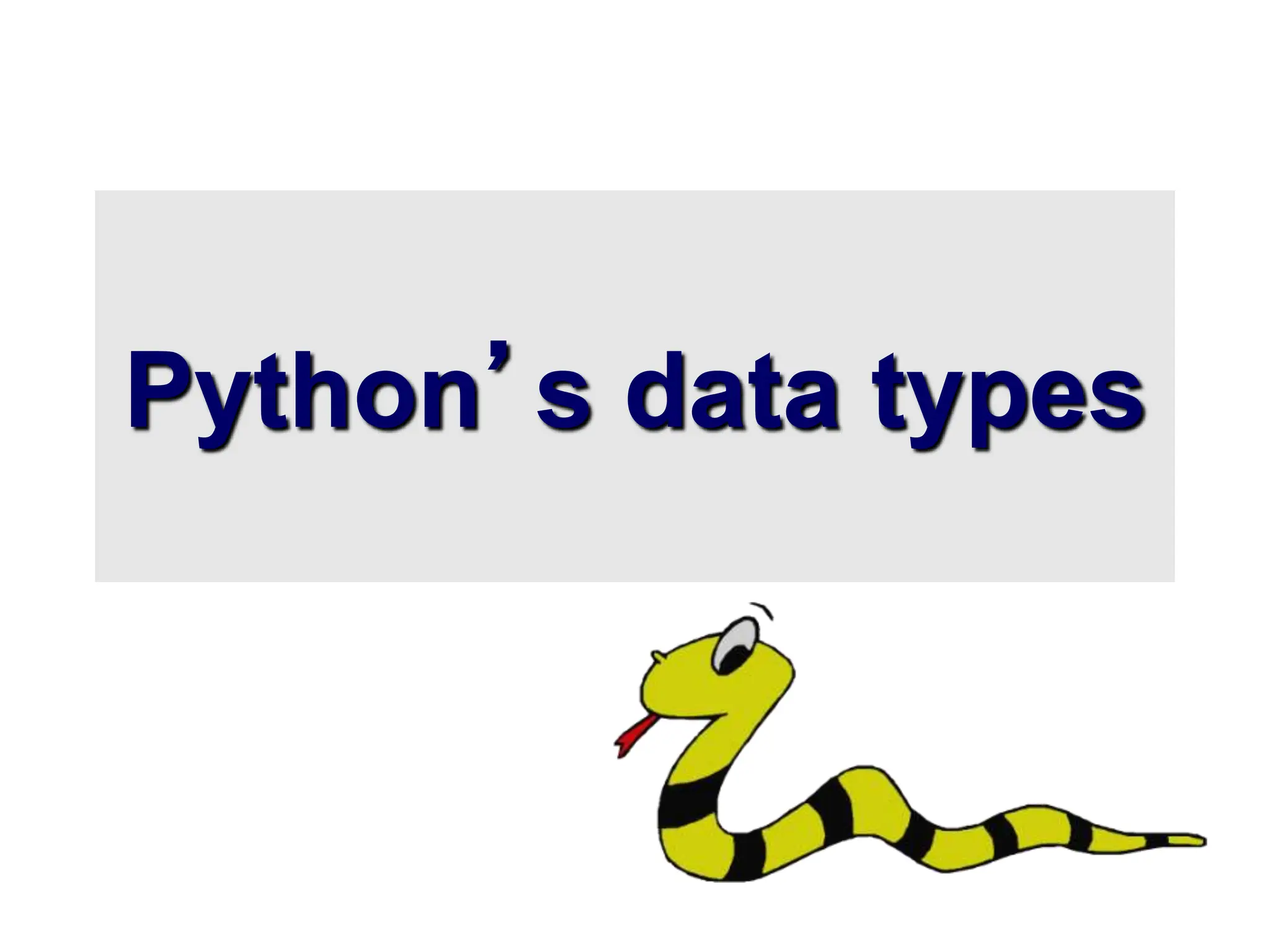
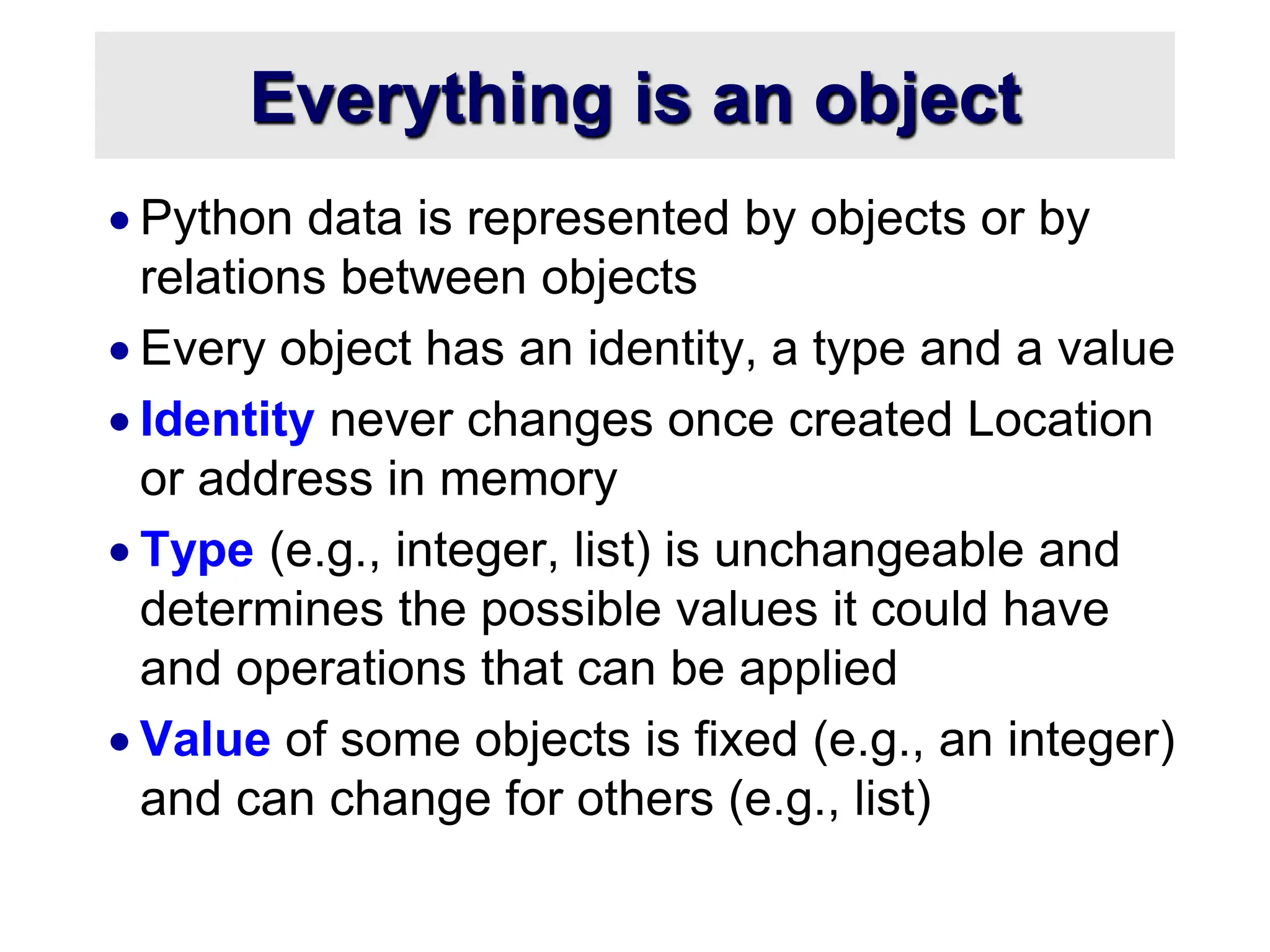
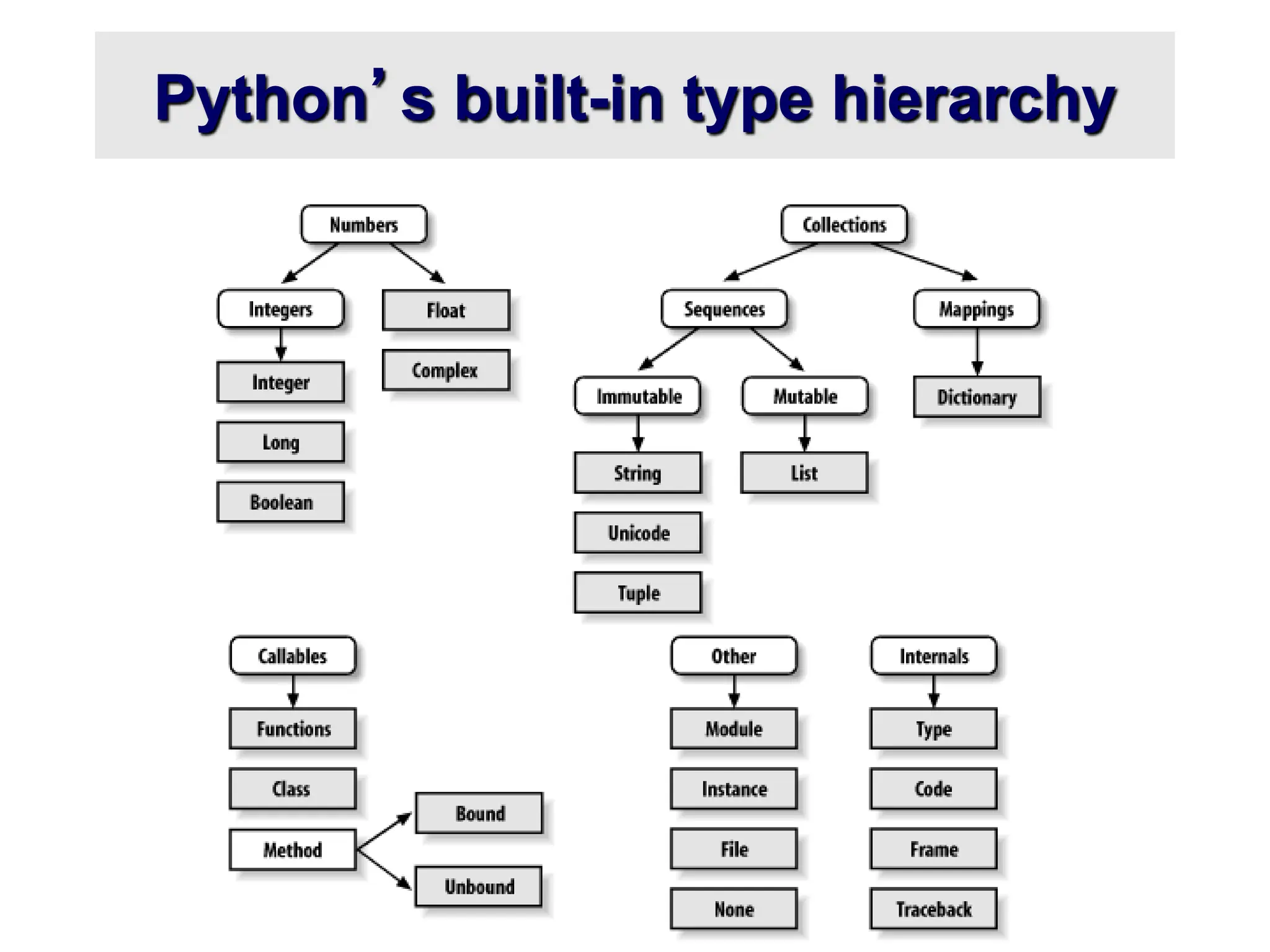
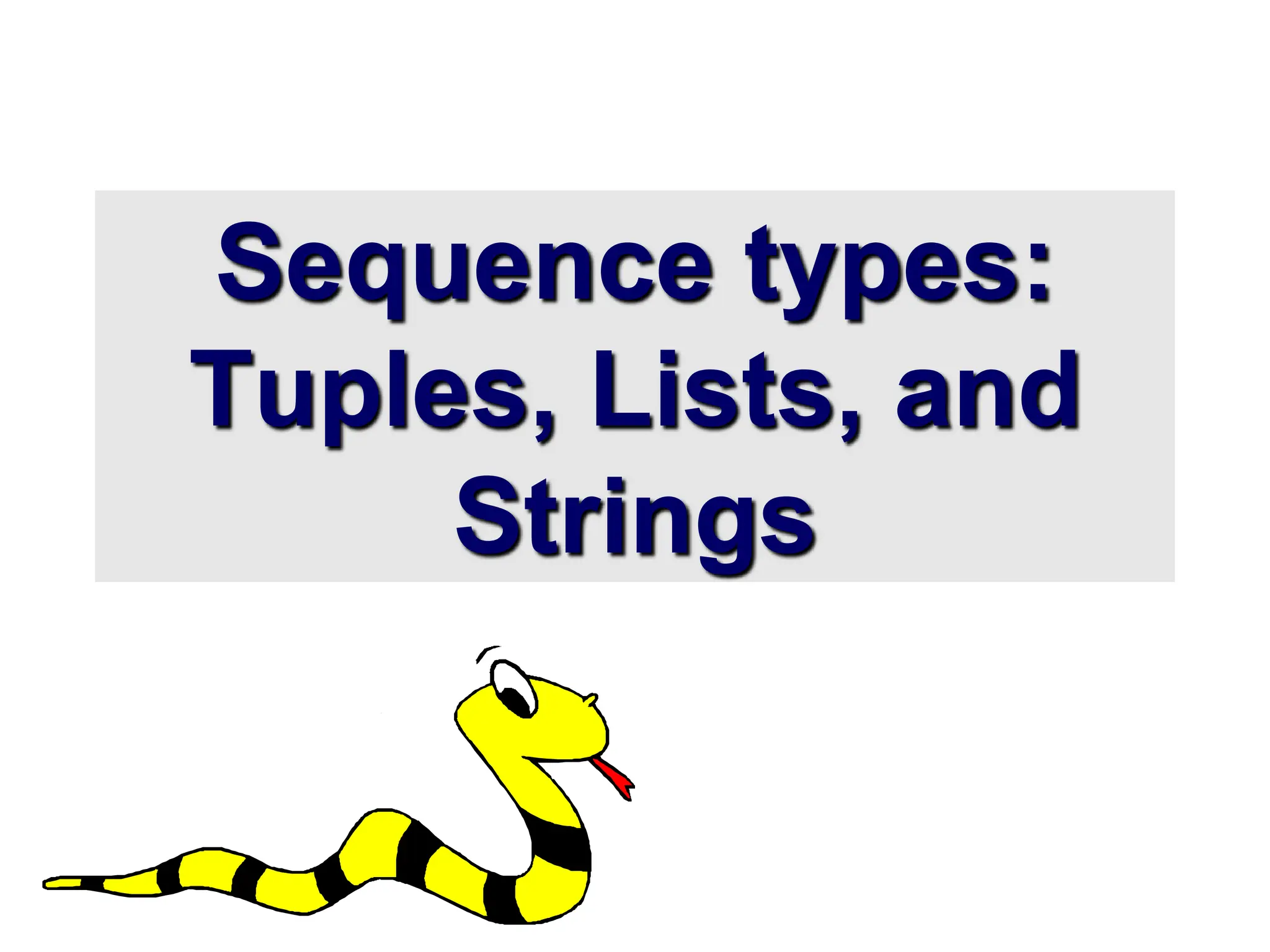
![Sequence Types Sequences are containers that hold objects Finite, ordered, indexed by integers Tuple: (1, “a”, [100], “foo”) An immutable ordered sequence of items Items can be of mixed types, including collection types Strings: “foo bar” An immutable ordered sequence of chars • Conceptually very much like a tuple List: [“one”, “two”, 3] A Mutable ordered sequence of items of mixed types](https://image.slidesharecdn.com/02python-240718090012-fe8c4528/75/Data-types-usually-used-in-python-for-coding-17-2048.jpg)
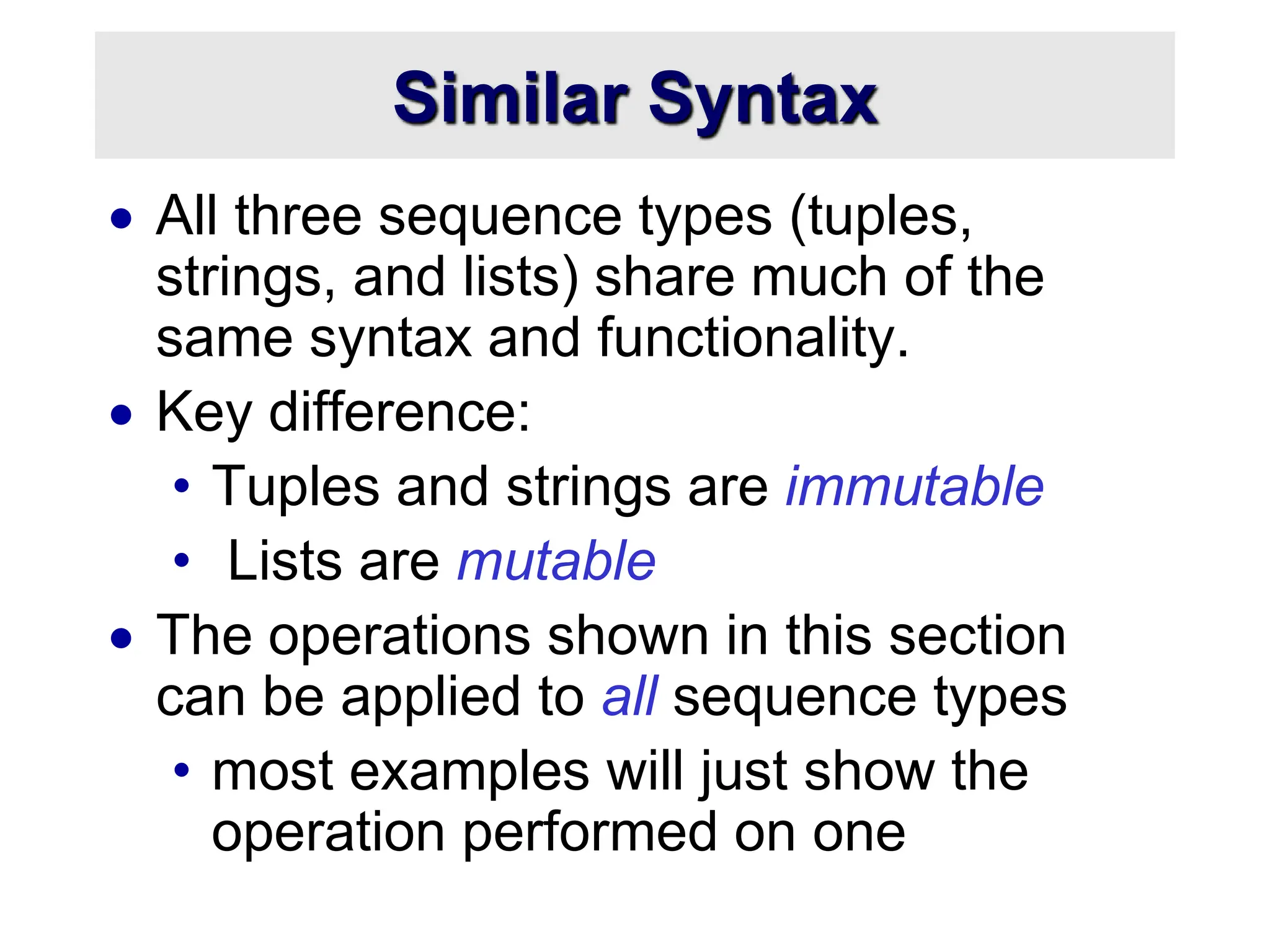
![Sequence Types 1 Define tuples using parentheses and commas >>> tu = (23, ‘abc’, 4.56, (2,3), ‘def’) Define lists are using square brackets and commas >>> li = [“abc”, 34, 4.34, 23] Define strings using quotes (“, ‘, or “””). >>> st = “Hello World” >>> st = ‘Hello World’ >>> st = “””This is a multi-line string that uses triple quotes.”””](https://image.slidesharecdn.com/02python-240718090012-fe8c4528/75/Data-types-usually-used-in-python-for-coding-19-2048.jpg)
![Sequence Types 2 Access individual members of a tuple, list, or string using square bracket “array” notation Note that all are 0 based… >>> tu = (23, ‘abc’, 4.56, (2,3), ‘def’) >>> tu[1] # Second item in the tuple. ‘abc’ >>> li = [“abc”, 34, 4.34, 23] >>> li[1] # Second item in the list. 34 >>> st = “Hello World” >>> st[1] # Second character in string. ‘e’](https://image.slidesharecdn.com/02python-240718090012-fe8c4528/75/Data-types-usually-used-in-python-for-coding-20-2048.jpg)
![Positive and negative indices >>> t = (23, ‘abc’, 4.56, (2,3), ‘def’) Positive index: count from the left, starting with 0 >>> t[1] ‘abc’ Negative index: count from right, starting with –1 >>> t[-3] 4.56](https://image.slidesharecdn.com/02python-240718090012-fe8c4528/75/Data-types-usually-used-in-python-for-coding-21-2048.jpg)
![Slicing: Return Copy of a Subset >>> t = (23, ‘abc’, 4.56, (2,3), ‘def’) Returns copy of container with subset of original members. Start copying at first index, and stop copying before the second index >>> t[1:4] (‘abc’, 4.56, (2,3)) You can also use negative indices >>> t[1:-1] (‘abc’, 4.56, (2,3))](https://image.slidesharecdn.com/02python-240718090012-fe8c4528/75/Data-types-usually-used-in-python-for-coding-22-2048.jpg)
![Slicing: Return Copy of a Subset >>> t = (23, ‘abc’, 4.56, (2,3), ‘def’) Omit first index to make a copy starting from the beginning of container >>> t[:2] (23, ‘abc’) Omit second index to make a copy starting at 1st index and going to end of the container >>> t[2:] (4.56, (2,3), ‘def’)](https://image.slidesharecdn.com/02python-240718090012-fe8c4528/75/Data-types-usually-used-in-python-for-coding-23-2048.jpg)
![Copying the Whole Sequence [ : ] makes a copy of an entire sequence >>> t[:] (23, ‘abc’, 4.56, (2,3), ‘def’) Note the difference between these two lines for mutable sequences >>> l2 = l1 # Both refer to same ref, # changing one affects both >>> l2 = l1[:] # Independent copies, two refs](https://image.slidesharecdn.com/02python-240718090012-fe8c4528/75/Data-types-usually-used-in-python-for-coding-24-2048.jpg)
![The ‘in’ Operator Boolean test whether a value is inside a container: >>> t = [1, 2, 4, 5] >>> 3 in t False >>> 4 in t True >>> 4 not in t False For strings, tests for substrings >>> a = 'abcde' >>> 'c' in a True >>> 'cd' in a True >>> 'ac' in a False Careful: the in keyword is also used in the syntax of for loops and list comprehensions](https://image.slidesharecdn.com/02python-240718090012-fe8c4528/75/Data-types-usually-used-in-python-for-coding-25-2048.jpg)
![+ Operator is Concatenation The + operator produces a new tuple, list, or string whose value is the concatenation of its arguments. >>> (1, 2, 3) + (4, 5, 6) (1, 2, 3, 4, 5, 6) >>> [1, 2, 3] + [4, 5, 6] [1, 2, 3, 4, 5, 6] >>> “Hello” + “ “ + “World” ‘Hello World’](https://image.slidesharecdn.com/02python-240718090012-fe8c4528/75/Data-types-usually-used-in-python-for-coding-26-2048.jpg)
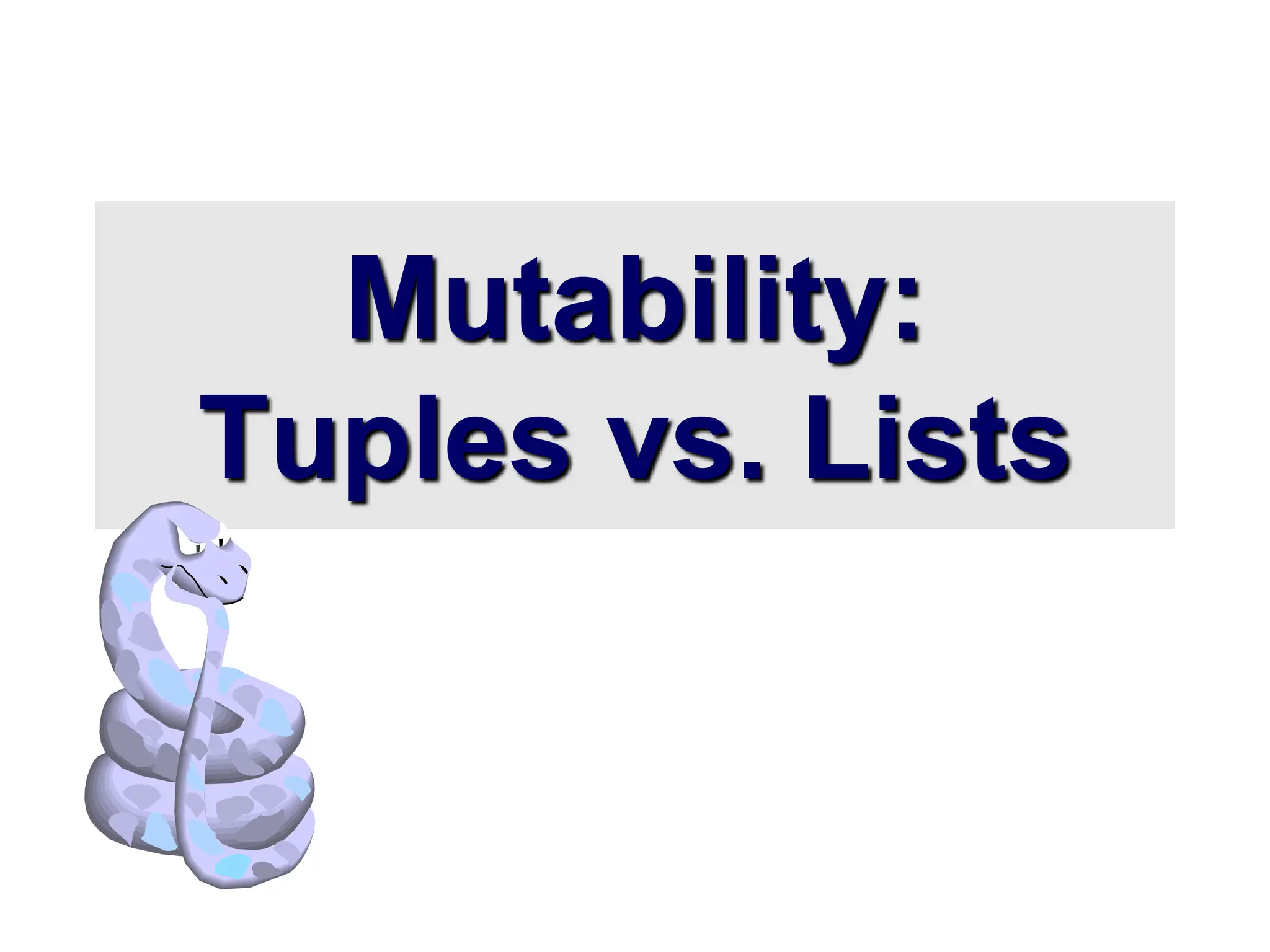
![Lists are mutable >>> li = [‘abc’, 23, 4.34, 23] >>> li[1] = 45 >>> li [‘abc’, 45, 4.34, 23] We can change lists in place. Name li still points to the same memory reference when we’re done.](https://image.slidesharecdn.com/02python-240718090012-fe8c4528/75/Data-types-usually-used-in-python-for-coding-28-2048.jpg)
![Tuples are immutable >>> t = (23, ‘abc’, 4.56, (2,3), ‘def’) >>> t[2] = 3.14 Traceback (most recent call last): File "<pyshell#75>", line 1, in -toplevel- tu[2] = 3.14 TypeError: object doesn't support item assignment You can’t change a tuple. You can make a fresh tuple and assign its reference to a previously used name. >>> t = (23, ‘abc’, 3.14, (2,3), ‘def’) The immutability of tuples means they are faster than lists](https://image.slidesharecdn.com/02python-240718090012-fe8c4528/75/Data-types-usually-used-in-python-for-coding-29-2048.jpg)
![Functions vs. methods Some operations are functions and others methods • Remember that (almost) everything is an object • You just have to learn (and remember or lookup) which operations are functions and which are methods len() is a function on collec- tions that returns the num- ber of things they contain >>> len(['a', 'b', 'c']) 3 >>> len(('a','b','c')) 3 >>> len("abc") 3 index() is a method on col- lections that returns the index of the 1st occurrence of its arg >>> ['a’,'b’,'c'].index('a') 0 >>> ('a','b','c').index('b') 1 >>> "abc".index('c') 2](https://image.slidesharecdn.com/02python-240718090012-fe8c4528/75/Data-types-usually-used-in-python-for-coding-30-2048.jpg)
![Lists methods Lists have many methods, including index, count, append, remove, reverse, sort, etc. Many of these modify the list >>> l = [1,3,4] >>> l.append(0) # adds a new element to the end of the list >>> l [1, 3, 4, 0] >>> l.insert(1,200) # insert 200 just before index position 1 >>> l [1, 200, 3, 4, 0] >>> l.reverse() # reverse the list in place >>> l [0, 4, 3, 200, 1] >>> l.sort() # sort the elements. Optional arguments can give >>> l # the sorting function and direction [0, 1, 3, 4, 200] >>> l.remove(3) # remove first occurence of element from list >>> l [0, 1, 4, 200]](https://image.slidesharecdn.com/02python-240718090012-fe8c4528/75/Data-types-usually-used-in-python-for-coding-31-2048.jpg)
